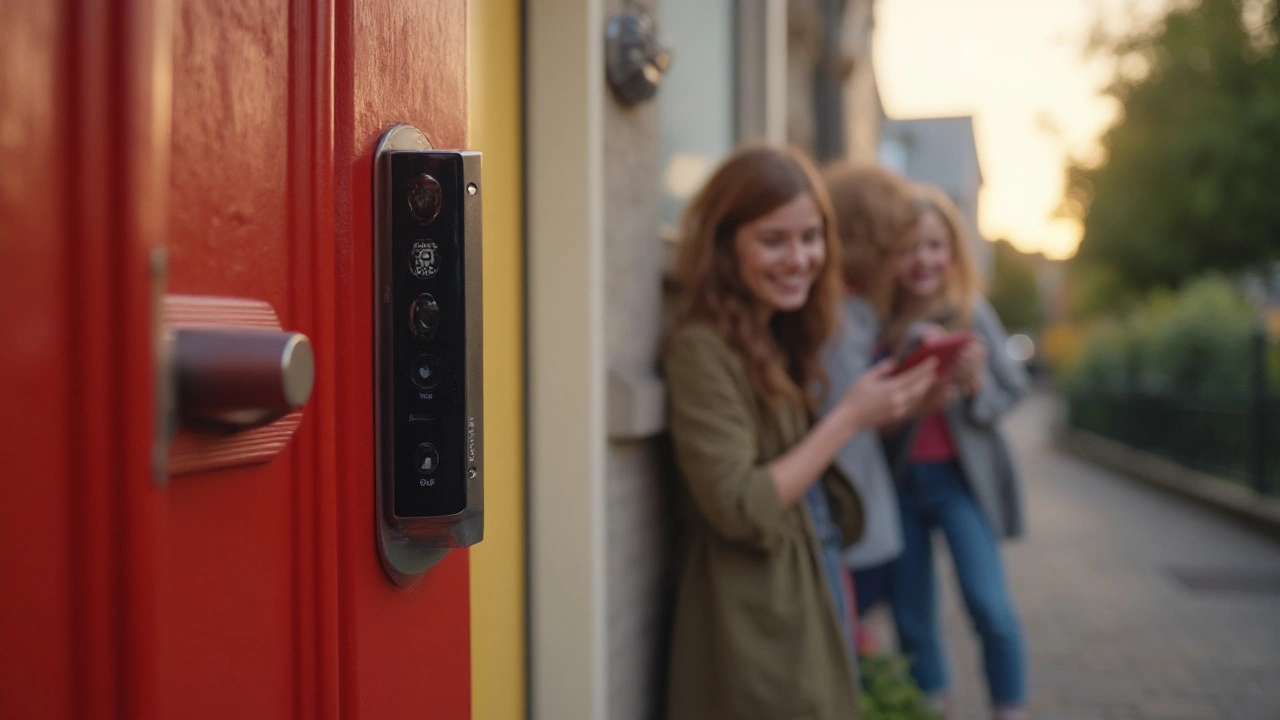If you’re looking for a simple way to see who’s at the front door and stop strangers from getting in, a doorbell security system is the answer. It’s just a doorbell with a camera, microphone and usually a mobile app that lets you watch live video on your phone. In the UK, these devices have become cheap enough to fit any budget, and they work with most smart home setups.
First, think about where the doorbell will sit. A wired model gives you constant power, so you never have to worry about the battery dying. If you rent or don’t want to run new cables, a wireless version is fine – just make sure the battery lasts at least six months with normal use.
Resolution matters. A 1080p camera shows faces clearly, while 720p can look blurry after dark. Look for models that have night‑vision LEDs; they’re basically tiny floodlights that let the sensor see in low light without alerting anyone.
Two‑way audio is another must‑have. It lets you speak to a visitor from your phone, which can scare off a thief or let a delivery driver know where to leave a parcel.
Finally, check the app’s storage options. Some brands keep video in the cloud for free up to a few days; others charge a monthly fee for longer storage. If you don’t want a subscription, pick a doorbell that offers local SD‑card storage.
Before you drill, turn off the power at the breaker if you’re swapping a wired doorbell. Most modern video doorbells come with a quick‑connect harness that fits standard low‑voltage wiring – just match the red and white wires, secure the connector, and you’re set.
For wireless models, mount the unit at the height of an average adult’s face (about 4‑5 feet). Too high and the camera angle will miss faces; too low and the view will be blocked by shoes or pets.
Make sure your Wi‑Fi signal is strong at the door. If the signal is weak, the video will lag or drop. A simple Wi‑Fi extender or a power‑over‑Ethernet (PoE) adapter can solve the problem without a big upgrade.
Don’t forget to test motion detection settings. Most doorbells let you set zones, so you can ignore passing traffic and focus on people approaching the door. Fine‑tuning these zones cuts down on false alerts and saves battery life.
One common mistake is forgetting to change the default password on the app. Hackers can grab the feed if the password is still “admin123”. Use a strong, unique password and enable two‑factor authentication if the app supports it.
After installation, walk through a few scenarios: ring the bell, speak through the app, and check the recording on both your phone and any integrated smart hub. If something feels off – blurry video, delayed alerts, or constant low‑battery warnings – revisit the settings or consider a different model.
All in all, a doorbell security system is a low‑effort upgrade that adds a big layer of protection. Pick a camera with good resolution, night vision, and reliable power, install it at the right height, and lock down the app. You’ll get a clear view of every visitor, a handy way to talk to delivery drivers, and a solid deterrent for anyone thinking of breaking in. Happy watching!

Curious about which doorbell security system actually works best in real life? Here's the inside scoop on top video doorbells, real user tips, and how to pick the smartest one for your home.